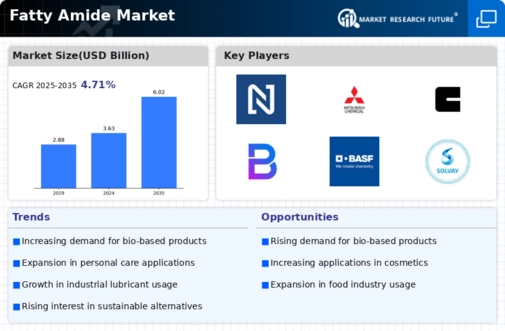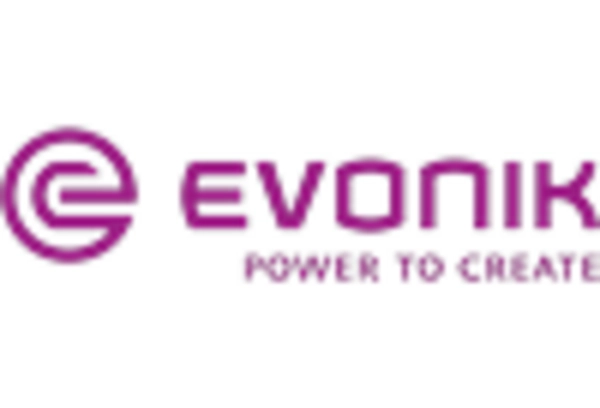Innovations in Food Processing
The Fatty Amide Market is also influenced by innovations in food processing. Fatty amides are utilized as emulsifiers and stabilizers in food products, contributing to improved texture and shelf life. The food processing industry is evolving, with a growing emphasis on clean label products and natural ingredients. This shift is likely to increase the demand for fatty amides, as manufacturers seek to meet consumer expectations for quality and safety. The food additives market is projected to grow at a rate of 4.5 percent, which may positively impact the Fatty Amide Market as it adapts to these trends.
Growth in Industrial Applications
The Fatty Amide Market is benefiting from the growth in industrial applications, particularly in the manufacturing of lubricants and coatings. Fatty amides are valued for their ability to enhance the performance of industrial products, providing superior lubrication and reducing friction. The industrial lubricants market is projected to grow significantly, with estimates suggesting a value of over USD 70 billion by 2025. This growth is likely to bolster the demand for fatty amides, as manufacturers seek to improve product efficiency and longevity. The increasing focus on high-performance materials in various industries indicates a favorable outlook for the Fatty Amide Market.
Expansion in Agricultural Applications
The Fatty Amide Market is witnessing growth due to the expanding applications in agriculture. Fatty amides serve as surfactants and adjuvants in agrochemical formulations, enhancing the efficacy of pesticides and herbicides. The agricultural sector is increasingly adopting innovative solutions to improve crop yields and sustainability. Reports indicate that the agrochemical market is expected to reach USD 300 billion by 2025, which may lead to a corresponding rise in the demand for fatty amides. This expansion in agricultural applications suggests a promising trajectory for the Fatty Amide Market, as it aligns with the global push for sustainable farming practices.
Rising Demand in Personal Care Products
The Fatty Amide Market is experiencing a notable increase in demand due to the growing popularity of personal care products. Fatty amides are utilized as emulsifiers, stabilizers, and surfactants in various formulations, enhancing product performance. The personal care sector is projected to grow at a compound annual growth rate of approximately 5.5 percent, which is likely to drive the consumption of fatty amides. As consumers increasingly seek high-quality and effective personal care solutions, manufacturers are incorporating fatty amides to improve texture and stability. This trend suggests a robust future for the Fatty Amide Market, as companies adapt to evolving consumer preferences and regulatory standards.
Regulatory Support for Sustainable Practices
The Fatty Amide Market is poised for growth due to increasing regulatory support for sustainable practices. Governments and organizations are promoting the use of biodegradable and environmentally friendly materials across various sectors. Fatty amides, being derived from natural sources, align well with these sustainability initiatives. The regulatory landscape is evolving, with stricter guidelines encouraging the adoption of sustainable ingredients in manufacturing processes. This trend may lead to a heightened demand for fatty amides, as companies strive to comply with regulations while meeting consumer demands for eco-friendly products. The Fatty Amide Market appears well-positioned to capitalize on these regulatory changes.

















Leave a Comment